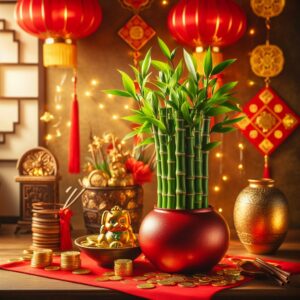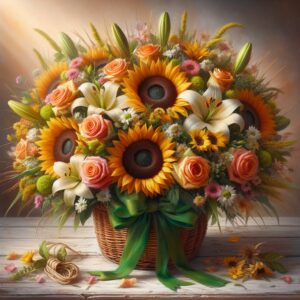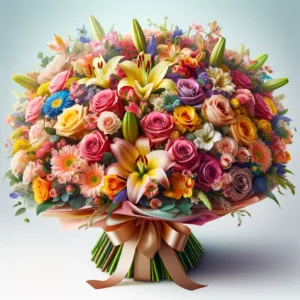Discover the allure of hydrangea hand bouquets with our exquisite collection. From monochromatic elegance to textured varieties, explore the latest trends in floral design. Elevate any occasion with the natural beauty and timeless charm of hydrangea hand bouquets.
Introduction
In the world of floral arrangements, hydrangea hand bouquets are a timeless symbol of elegance and natural beauty. Hydrangeas have become a favorite choice for hand-held bouquets for weddings, special occasions, and everyday occasions thanks to their lush, voluminous blooms and versatile color palette. Hydrangea hand bouquets offer a captivating array of options to suit any aesthetic preference or celebration, from delicate pastel hues to vibrant bursts of color.
Our guide explores the enchanting world of hydrangea hand bouquets, exploring their versatility, charm, and the latest trends influencing their design in this guide. Discover the beauty and allure of hydrangea hand bouquets whether you are planning a romantic wedding, a sophisticated evening, or just looking for a way to brighten someone’s day.
Hydrangea
Over 70 species of flowering plants belong to the genus Hydrrangeas, commonly referred to as the Hortensia, which is native to Asia and the Americas. Eastern Asia, particularly China, Korea, and Japan, exhibits the greatest species diversity. Several species of lianas range in height from 1 to 3 meters, but some of them are small trees and others climb to 30 meters by climbing up trees. They can be either deciduous or evergreen, but all of the widely cultivated temperate species are deciduous.
Many hydrangea varieties display blue flowers in acidic soils and pink ones in alkaline soils, acting as natural pH indicators.
Etymology
Hydrangea is derived from Greek and means ‘water vessel’ (from ὕδωρ húdōr “water” + ἄγγος ángos or ἀγγεῖον angeîon “vessel”), in reference to the shape of its seed capsules. The earlier name, Hortensia, is a Latinised version of the French given name Hortense, honoring French astronomer and mathematician Nicole-Reine Hortense Lepaute.
Life cycle
Hydrangea flowers are produced from early spring to late autumn; they grow in flowerheads (corymbs or panicles) most often at the ends of the stems. Typically the flowerheads contain two types of flowers: small non-showy fertile flowers in the center or interior of the flowerhead, and large, sterile showy flowers with large colorful sepals (tepals). These showy flowers are often extended in a ring, or to the exterior of the small flowers. Plants in wild populations typically have few to none of the showy flowers, while cultivated hydrangeas have been bred and selected to have more of the larger type flowers.
Colors and soil acidity
Based on the pH level in the soil, Hydrangea flowers change color. According to the graph, hydrangeas with a pH of 5.5 or lower will produce blue flowers, hydrangeas with a pH of 6.5 or higher will produce pink flowers, and hydrangeas between 5.5 and 6.5 will produce purple flowers. Since white hydrangeas do not produce pigment for color, soil pH cannot be used to manipulate their color. Thus, although inflorescence hues are determined by cultural factors, color saturation is genetically determined.
The flowers are usually white in most species. The flowers can, however, be blue, red, or purple in certain species (notably H. macrophylla), and the color saturation levels range from pale pinks, lavenders and powder blues to deep, rich purples, bordeaux, and royal blues. The color change of floral color occurs in these species due to aluminum ions, a variable dependent upon the soil pH. For example, H. macrophylla and H. A cultivar’s flower color can be determined by the soil’s relative acidity: acidic soils (pH less than 7) will have available aluminum ions and produce blue to purple flowers, whereas alkaline soils (pH over 7) will tie up aluminum ions, resulting in pink or red flowers.
A color change of the flower pigments occurs in the presence of aluminum ions, which can be absorbed by hyperaccumulating plants.
Partial list of species
There are several species of hydrangeas listed in this section, including Hydrangea macrophylla (bigleaf hydrangea), Hydrangea paniculata (panicled hydrangea), and many others, illustrating the diversity of hydrangeas.
Fossil record
Many extinct species of hydrangea have been found in the fossil record, indicating that these plants have been around for a long time.
Cultivation and uses
Known for their large flowerheads, Hydrangeas are widely grown ornamental plants. Hydrangea macrophylla is the most widely grown species, with more than 600 cultivars available. Some cultivars and species that have received the Royal Horticultural Society Award of Garden Merit include a wide variety of cultivars and species. They are best pruned when new leaf buds begin to appear.
As well as being used to treat urinary tract conditions, Hydrangea roots and rhizomes may also possess diuretic properties. All parts of Hydrangeas contain cyanogenic glycosides, making them moderately toxic if consumed. Despite the dangers associated with the cyanide, Hydrangea paniculata is sometimes smoked as an intoxicant.
In culture
In Japan, ama-cha, meaning sweet tea, is another herbal tea made from Hydrangea serrata, whose leaves contain a substance that develops a sweet taste. The pink hydrangea has grown in popularity throughout the world, particularly in Asia. Hydrangea quercifolia was declared the official state wildflower of Alabama in 1999 because of its given meaning, “You are the beat of my heart.” Cherokees used hydrangea plants as mild diuretics and cathartics for centuries.
Type of Hydrangea Hand Bouquets
Hydrangeas are admired for their lush blooms and versatile beauty, making them a popular choice for hand bouquets across a wide range of occasions. In addition to creating stunning arrangements on their own or as part of a mixed bouquet, hydrangeas are also known for their full, vibrant clusters of flowers. This article explores various types of hydrangea hand bouquets, which show their diversity and charm.
1. Classic Hydrangea Bouquet
Classic hydrangea bouquets usually feature only a single type of hydrangea, typically the bigleaf hydrangea (Hydrangea macrophylla), characterized by its large, round flower heads. In order to emphasize the fullness of the blooms, these bouquets are usually arranged in a tight, rounded form. Colors vary depending on the pH level of the soil where the hydrangea grows, from deep blue to vibrant pink to soft white and cream hues.
2. Mixed Flower Bouquet
The voluminous nature of Hydrangeas makes them an excellent base for mixed flower bouquets. Hydrangeas can be combined with roses, peonies, lilies, or other seasonal flowers to create a rich tapestry of textures and colors in a mixed bouquet. Hydrangeas provide a backdrop for the other flowers, allowing their colors and shapes to stand out.
3. Rustic Hydrangea Bouquet
Alternatively, a bouquet of hydrangeas might include wildflowers, greenery, and herbs to give it a more rustic, natural appearance. These bouquets often feature the lace cap hydrangea (Hydrangea macrophylla normalis) or the panicle hydrangea (Hydrangea paniculata), which have a more relaxed, less formal appearance. By incorporating elements such as eucalyptus, lavender, and wheat, the bouquet can have a charming, countryside atmosphere.
4. Bridal Hydrangea Bouquet
Hydrangeas are a favorite for wedding bouquets due to their lushness and range of colors. A bridal hydrangea bouquet might focus on soft pastels or white and cream hues, incorporating varieties like the Annabelle hydrangea for its stunning, snowball-like clusters. These bouquets are often styled with a romantic, elegant flair, sometimes accented with pearls or lace for a touch of bridal sophistication.
5. Modern Hydrangea Bouquet

For a contemporary twist, modern hydrangea bouquets might play with unusual color combinations, geometric shapes, and unexpected accents. These arrangements may feature the vibrant greens of the ‘Limelight’ hydrangea or the striking deep purples of the ‘Cityline Mars’ variety. Modern bouquets often experiment with asymmetry and texture, including the use of dried hydrangeas for a unique, avant-garde look.
6. Seasonal Hydrangea Bouquet
Seasonal hydrangea bouquets celebrate the colors and moods of the changing seasons. Spring arrangements might highlight the fresh greens and soft pinks of newly bloomed hydrangeas, while autumn bouquets could feature the rich reds and golds of hydrangeas that have aged gracefully into the fall. Each season offers a new palette for creating beautiful, timely arrangements.
7. Miniature Hydrangea Bouquet
For a delicate, understated option, miniature hydrangea bouquets use the smaller blooms of varieties like the dwarf hydrangea. These bouquets are perfect for bridesmaids, flower girls, or as a subtle but beautiful table centerpiece. Despite their smaller size, these bouquets still offer the fullness and charm of their larger counterparts.
Occasions for Hydrangea Bouquets
Hydrangea bouquets, with their lush blooms and wide range of colors, are a popular choice for many occasions. Their fullness and versatility make them suitable for both formal events and casual gatherings, symbolizing heartfelt emotions and adding a touch of elegance. Here are several occasions where hydrangea bouquets perfectly convey sentiments and enhance the celebration.
1. Weddings
Hydrangeas are a staple in wedding ceremonies and receptions due to their romantic appeal and volume, which create stunning arrangements. They can be used in bridal bouquets, centerpieces, and decorations, embodying purity, grace, and abundance. Hydrangea bouquets can be tailored to match the wedding theme, from classic white arrangements to vibrant blues and pinks, reflecting the joy and love of the occasion.
2. Anniversaries
Celebrating an anniversary with a hydrangea bouquet is a beautiful way to express enduring love and appreciation. The robust nature of hydrangeas symbolizes the strength and growth of the couple’s relationship over the years. Opting for colors that reflect the specific anniversary milestone can add a personal touch to the gesture.
3. Birthdays
A hydrangea bouquet is an excellent choice for a birthday gift, offering a cheerful and luxurious token of affection. The wide range of colors available allows for personalization according to the recipient’s preferences or the significance of their birth month. A mixed bouquet incorporating hydrangeas can also symbolize the uniqueness and beauty of another year celebrated.
4. Mother’s Day
Hydrangeas convey heartfelt gratitude and admiration, making them a perfect choice for Mother’s Day. A bouquet of pastel hydrangeas can express appreciation for a mother’s love and care, while brighter colors celebrate her vibrant personality and the joy she brings to the family.
5. Housewarming
Giving a hydrangea bouquet as a housewarming gift symbolizes the wish for happiness and prosperity in the new home. The lushness of hydrangeas fills the space with beauty and a welcoming atmosphere, making them an ideal choice for this occasion.
6. Graduations
A hydrangea bouquet is a thoughtful way to congratulate a graduate, symbolizing achievement and the beginning of a new chapter. The full, vibrant blooms represent abundance and opportunities ahead, offering encouragement and support for the graduate’s future endeavors.
7. Get Well Soon
Sending a hydrangea bouquet to someone who is recovering from an illness can brighten their day and offer a message of hope and healing. The soothing colors and lush appearance of hydrangeas can lift spirits and convey wishes for a speedy recovery.
8. Sympathy and Funerals
While traditionally not the first choice for such occasions, white or soft blue hydrangeas can be included in sympathy bouquets or arrangements to express heartfelt condolences and peace. Their serene beauty offers comfort and signifies compassion and understanding during difficult times.
DIY Hydrangea Bouquet
Creating a DIY hydrangea bouquet is a delightful way to craft a personal and meaningful floral arrangement, whether for a special occasion or to brighten your home. Hydrangeas, with their lush, voluminous blooms, make the task enjoyable and relatively easy, even for beginners. Here’s a step-by-step guide to help you create your own hydrangea bouquet.
Materials Needed
- Fresh hydrangea blooms
- Floral scissors or sharp garden shears
- Floral tape
- Ribbon or twine
- Optional: Additional flowers or greenery for variety
- Water and a vase or container for initial preparation
Step 1: Select Your Hydrangeas
Choose hydrangeas in your desired color and ensure they are fresh and vibrant. Consider the size of the bouquet and select enough blooms to create a full arrangement. Mixing colors can add depth and interest to your bouquet.
Step 2: Prepare the Stems
Cut the stems at a 45-degree angle under running water to enhance water absorption. Remove any leaves that will be below the water line when placed in a vase to prevent rotting. Initially, place the stems in a vase of water for a few hours to hydrate them before arranging.
Step 3: Start with a Base Flower
Begin your arrangement by choosing a robust hydrangea bloom as the centerpiece. This will be the foundation around which you’ll build the rest of your bouquet.
Step 4: Add More Hydrangeas
Slowly add more hydrangea blooms around your base flower, turning the bouquet in your hand as you go. This helps ensure the bouquet is symmetrical and full from all angles. For a simple bouquet, stick to hydrangeas only, focusing on creating a rounded, pleasing shape.
Step 5: Introduce Variety (Optional)
For a more complex bouquet, intersperse other flowers or greenery between the hydrangeas. This can add texture, contrast, and depth to your arrangement. Popular choices include roses, peonies, eucalyptus, and ferns. Be mindful of balancing colors and textures for aesthetic harmony.
Step 6: Secure the Bouquet
Once you’re satisfied with your arrangement, use floral tape to secure the stems together. Wrap the tape several times around the stems, about midway down from the flowers. Ensure it’s tight enough to hold the bouquet in shape but not so tight as to damage the stems.
Step 7: Trim the Stems
With your bouquet assembled and secured, trim the stems at the bottom so they are even. This will give your bouquet a clean, polished look and make it easier to place in a vase.
Step 8: Add the Finishing Touches
Wrap the stems in ribbon or twine for a decorative touch, covering the floral tape. You can also add decorative pins or accessories to personalize your bouquet further.
Step 9: Final Hydration
Place the finished bouquet in a vase with fresh water. If the bouquet is for an event, keep it in water as long as possible before the event starts to ensure the blooms stay hydrated and fresh.
Step 10: Enjoy or Gift Your Bouquet
Admire your handcrafted hydrangea bouquet or wrap it in tissue paper or decorative wrapping if you’re gifting it. Remember to include care instructions if giving it away, such as the need for daily water changes and keeping it out of direct sunlight.
Trends in Hydrangea Bouquets
Hydrangea bouquets have long been a favorite choice for weddings, special events, and everyday floral arrangements. These versatile blooms come in a variety of colors and sizes, making them a popular option for florists and DIY enthusiasts alike. As we enter a new era of floral design, several trends are emerging in the world of hydrangea bouquets.
- Monochromatic Elegance: One of the latest trends in hydrangea bouquets is creating monochromatic arrangements. This involves using hydrangea blooms in varying shades of the same color for a sophisticated and cohesive look. Whether it’s a bouquet of soft pink hues or deep shades of blue, monochromatic hydrangea arrangements exude elegance and charm.
- Textured Variety: Another trend gaining popularity is incorporating different textures into hydrangea bouquets. By mixing hydrangea blooms with foliage, berries, or other complementary flowers, florists can add depth and interest to the arrangement. Textured hydrangea bouquets offer a more organic and natural aesthetic, perfect for rustic or garden-themed weddings.
- Minimalist Chic: In line with the minimalist movement in floral design, simple and understated hydrangea bouquets are becoming increasingly fashionable. These bouquets feature fewer blooms arranged in a clean and uncomplicated manner, allowing the beauty of the hydrangea flowers to speak for themselves. Minimalist hydrangea bouquets are perfect for modern weddings and events seeking a sleek and refined aesthetic.
- Statement Stems: Asymmetric and cascading arrangements featuring long, dramatic stems are making a comeback in hydrangea bouquet trends. By incorporating trailing vines or branches into the bouquet, florists can create breathtaking designs that command attention. Statement stem hydrangea bouquets are ideal for bohemian or whimsical weddings, adding a touch of drama and romance to the occasion.
- Seasonal Sensibility: Embracing the natural beauty of seasonal blooms is another trend influencing hydrangea bouquet designs. Incorporating seasonal flowers and foliage alongside hydrangeas creates arrangements that feel fresh, organic, and in harmony with the time of year. Whether it’s spring tulips, summer peonies, or autumn foliage, seasonal hydrangea bouquets reflect the changing seasons and add a touch of seasonal charm to any event.
FAQ’s
Although hydrangea flowers endure indefinitely on the shrub, they tend to wilt once detached. This presents a challenge when incorporating them into floral arrangements. However, with a handful of tips and tricks, you can craft a stunning hydrangea bouquet that retains its beauty for days to come.
Hydrangeas, alternatively referred to as Hortensias or Grandmother’s Flowers, boast petite and delicate petals.
It’s crucial to ensure you’re purchasing the freshest hydrangeas possible, ideally between 1 to 3 days old, as their lifespan typically ranges from 5 to 9 days, contingent upon proper care.
The intricate cultivation process of these flowers contributes to their classification among the most expensive flowers globally. Discover the most exquisite hydrangeas in town by exploring our Hydrangea Flower Category. Shop online now and enjoy same-day delivery across the United Arab Emirates.
Symbolizing gratitude and sincerity, pink hydrangeas serve as an ideal gift for a friend’s birthday or simply to express affection “just because.” For a heartfelt display of love and romance towards your partner, consider gifting them pink or red hydrangeas as a genuine and romantic gesture.
Conclusion
Hydrangea hand bouquets offer a timeless and enchanting choice for any occasion, whether it’s a wedding, special event, or simple gesture of appreciation. With their lush blooms and versatile colors, hydrangeas add a touch of elegance and natural beauty to any floral arrangement. From monochromatic sophistication to textured variety, the trends in hydrangea hand bouquets continue to evolve, providing endless possibilities for creativity and expression. Whether you’re crafting a bouquet for yourself or someone special, the allure of hydrangea hand bouquets is undeniable, making them a cherished choice for generations to come.







